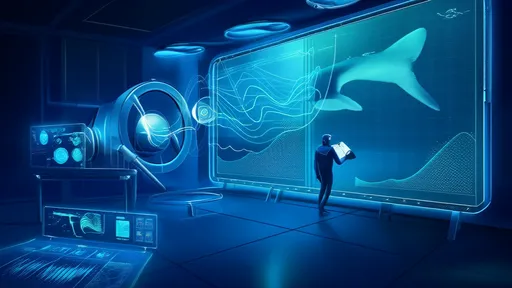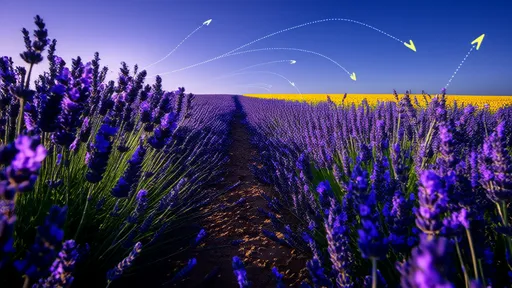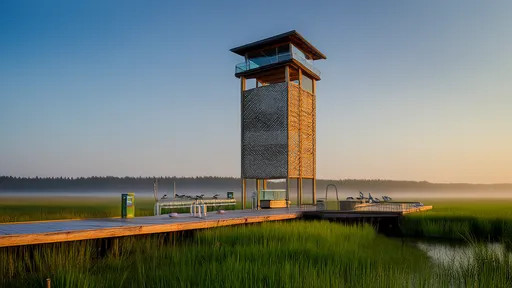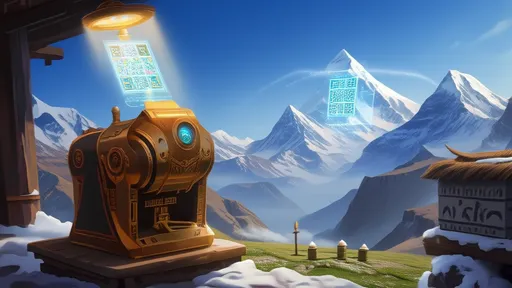The ocean has always been a realm of mystery, its depths hiding secrets that humanity has only begun to unravel. Among its most enigmatic inhabitants are whales, whose haunting songs have captivated scientists and poets alike. Recent breakthroughs in bioacoustics, particularly the Whale Song Translation Experiment, are pushing the boundaries of our understanding, suggesting that these marine giants may communicate in dialects as nuanced as human languages. Hydrophone recordings and advanced sonar analysis are now revealing patterns that challenge long-held assumptions about cetacean intelligence.
For decades, researchers have documented the complex vocalizations of humpback whales, sperm whales, and orcas. But it wasn’t until the deployment of high-resolution underwater microphones and machine learning algorithms that scientists detected regional variations in whale calls. A team from the Oceanic Linguistics Project at Scripps Institution of Oceanography recently published findings showing distinct "accents" among pods in the North Atlantic compared to those in the South Pacific. These differences aren’t merely random—they follow syntactic rules, hinting at a cultural transmission of communication styles across generations.
The implications are profound. If whales use dialects, it suggests a level of social learning previously thought to be unique to humans and a handful of terrestrial species. Dr. Elena Vazquez, lead marine biologist on the project, describes it as "hearing Shakespeare one day and Faulkner the next—the same language, but with entirely different rhythms and cadences." Her team’s hydrophone arrays captured sperm whales in the Caribbean using click sequences that mirror the grammatical structures of tonal languages, while their Arctic counterparts employed shorter, staccato pulses.
Beyond linguistics, this research could reshape conservation efforts. Industrial shipping noise has long been known to disrupt marine life, but the new data reveals something more insidious: young whales raised in noisy waters fail to develop proper vocal articulation, much like children deprived of linguistic stimulation. The haunting silence of increasingly quiet humpback populations near major ports may reflect not just habitat loss, but the erosion of an ancient oral culture. Conservationists are now advocating for "acoustic sanctuaries"—protected zones where whale songs can propagate without human interference.
Technological advances are accelerating discoveries. Autonomous deep-sea drones equipped with 3D hydrophone grids can now track individual whales across hundreds of miles, mapping how their calls evolve during migrations. Early analysis shows that blue whales alter their frequencies when crossing oceanic basins, possibly to account for variations in water temperature and salinity that affect sound transmission. Meanwhile, AI models trained on decades of naval sonar data are identifying previously unnoticed call-and-response patterns between mother-calf pairs, suggesting teaching behaviors.
Skepticism persists, of course. Some marine acousticians argue that labeling these variations as "dialects" anthropomorphizes animal behavior. Yet the mounting evidence—including documented cases of orcas adopting new clicks to communicate with adopted pod members—paints a picture of sophistication that demands a reevaluation of interspecies boundaries. As we decode more of these aquatic symphonies, we’re not just listening to whales; we’re glimpsing the birth of linguistics in an alien world, one that flourished for millennia before humans ever walked the earth.
The next phase of research aims even higher: real-time translation. A joint initiative between MIT’s Computer Science and Artificial Intelligence Laboratory and the Woods Hole Oceanographic Institution is developing neural networks to interpret whale vocalizations contextually. Early tests involving humpback "greeting ceremonies" have yielded promising correlations between specific sound clusters and observable behaviors like breaching or bubble-net feeding. While a full cetacean Rosetta Stone remains elusive, each breakthrough brings us closer to answering an age-old question: what might these ancient mariners be saying about us, as we’ve sailed—often destructively—through their liquid cosmos?
Perhaps the most humbling revelation isn’t technological but philosophical. The ocean’s depths may hold not just new species, but new paradigms of consciousness. When a sperm whale’s 200-decibel click travels through the abyss, carrying the equivalent of emotional nuance and geographic identity, it challenges our assumptions about what language even is. As one researcher mused during a late-night lab session, "We went looking for animal communication and found something that might be art." In that space between sonar pings and poetry, the whales keep singing—whether we understand them or not.

By /Jul 16, 2025

By /Jul 16, 2025

By /Jul 16, 2025

By /Jul 16, 2025

By /Jul 16, 2025

By /Jul 16, 2025

By /Jul 16, 2025

By /Jul 16, 2025

By /Jul 16, 2025

By /Jul 16, 2025

By /Jul 16, 2025

By /Jul 16, 2025

By /Jul 16, 2025

By /Jul 16, 2025

By /Jul 16, 2025

By /Jul 16, 2025

By /Jul 16, 2025

By /Jul 16, 2025